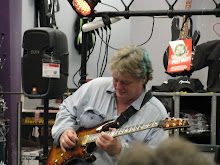There are times, in our lives as Christians, when the Word is our only sustenance, and there is no one to talk to, times when only we talk to God. It may even seem that God isn't listening. What do we do when God is silent and seemingly unresponsive? Well, might I suggest we devote ourselves to study, of either Scripture or another praiseworthy discipline, such as music, art or literature, and learn the creative aspects of our focus of study. For instance, you, as do many, may believe you are not able to draw, paint or sculpt. You may be befuddled at the very sight of art supplies. But Jesus said, "If you believe, nothing will be impossible for you." I tell you, while I'm not very productive right now in my life, artistically speaking, not only do I believe, but I know I can draw. My technique has slipped after years of artistic inactivity, but I pray God renew my zeal for art and the pursuit of it, and the same thing goes for music and the composing of it.
What is, or what are the fundamental elements of art? Line, light, shade, tone and color. Well, if one wants to paint well, or sculpt well, they must first learn to draw. Would you like to draw? Perhaps we can learn together. I'm hoping to come out of my creative dormancy, and do greater things than I have ever done before, and maybe I'll turn this blog into a public journal of my creative progress. And I believe Jesus in what he says: "If you believe, nothing will be impossible for you." I believe that there is no challenge that is too daunting that I cannot master the thing before me, be it an empty drawing pad, the neck of a guitar. If I were so inclined, I could climb Everest and scale it to its peak. Maybe that is what we can call this journey: Everest; or Project Everest, better yet. By and large, I have taught myself nearly everything I know how to do. I have had little human instruction, but as you can see, I am a competent writer who knows how to conjugate the English language, and I will tell you, I nearly failed high school, earning little more than D's as my passing marks. But, while I have yet to graduate, even now at the age of not quite 45, I have gone on to do quite well at the college and university level, having taken only one college level writing course, and that well over ten years ago. The rest, I have been taught, by the grace of God, by myself. I say these things not to pat myself on the back, but to encourage someone who wants to improve upon themselves who hadn't erstwhile believed that they could. Genius, as they say, is 1% inspiration, 99% perspiration. I believe that wholeheartedly. All one needs is a good idea and the resolve to refine it and develop it. The Bible says, "In the beginning was the word, " and, "All hard work brings a profit." This is a gathering of two Biblical sayings that support, and confirm, the saying about genius.
Let's spend a little while talking about drawing, and then move on to headier aspects of art. First, we need to spend some time discussing the fundamental of art. What is the artistic definition of line? According to Wikipedia (ref. http://en.wikipedia.org/wiki/Line), in geometry, a line is an indefinite, one-dimensional figure that has no curvature. That is a good starting definition for the artist, but how many different kinds of line are there? There is such a thing as a thick, or heavy, line; there is the outline, which is also known to artists as 'the arabesque.' We could say there is such as thing as the curved line, but let's simplifiy our vocabulary and save ourselves some steps, and just refer to that as a curve. What other kinds of lines are there?
Much like the outline is the contour of something. That might be a tricky one. Let us look to a classical definition of contour. Again, according to wikipedia, a contour is "any drawn outline, especially if curved." a question comes to mind: What is the contour of a square or rectangle? Of a triangle? It may seem very abstract to ask such questions this early on in our journey together, but I don't think so. The point I want to illustrate is this, and it is sheer deductive reasoning based on the last definition given: a contour doesn't necessarily have to be curved in order to be a contour. A contour can apply to a rectangle, a square, a circle, an oval, a triangle, a trapezoid or shapes that would be classified as organic, the organic perhaps being the most complex of all the aforementioned. Which brings us to another step in our evolution and progress as artists: shape and form. That will be left to the next post.
Subscribe to:
Post Comments (Atom)

No comments:
Post a Comment